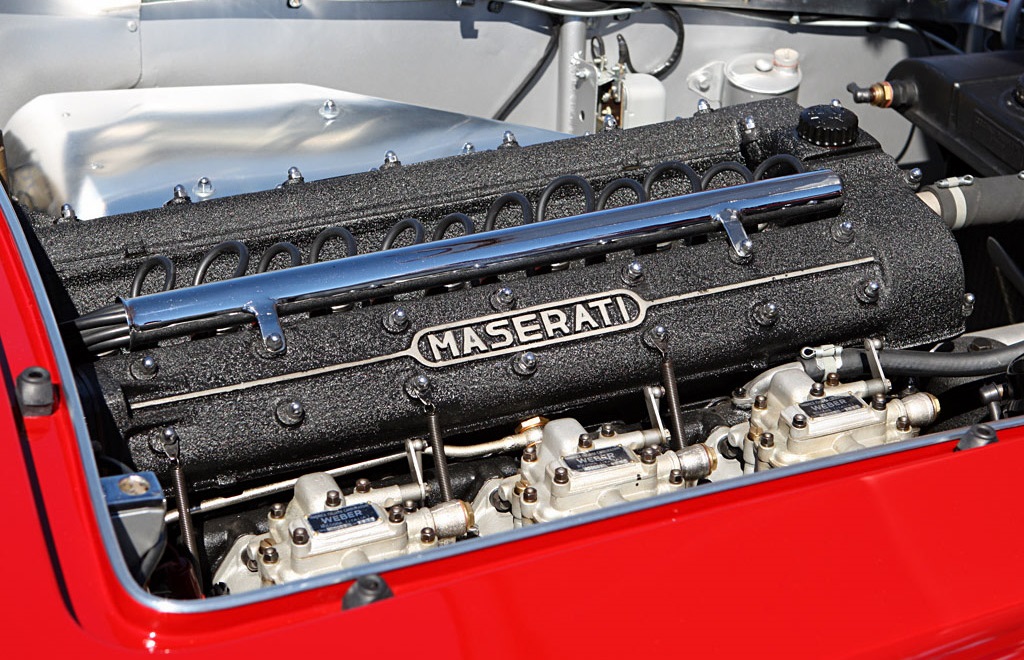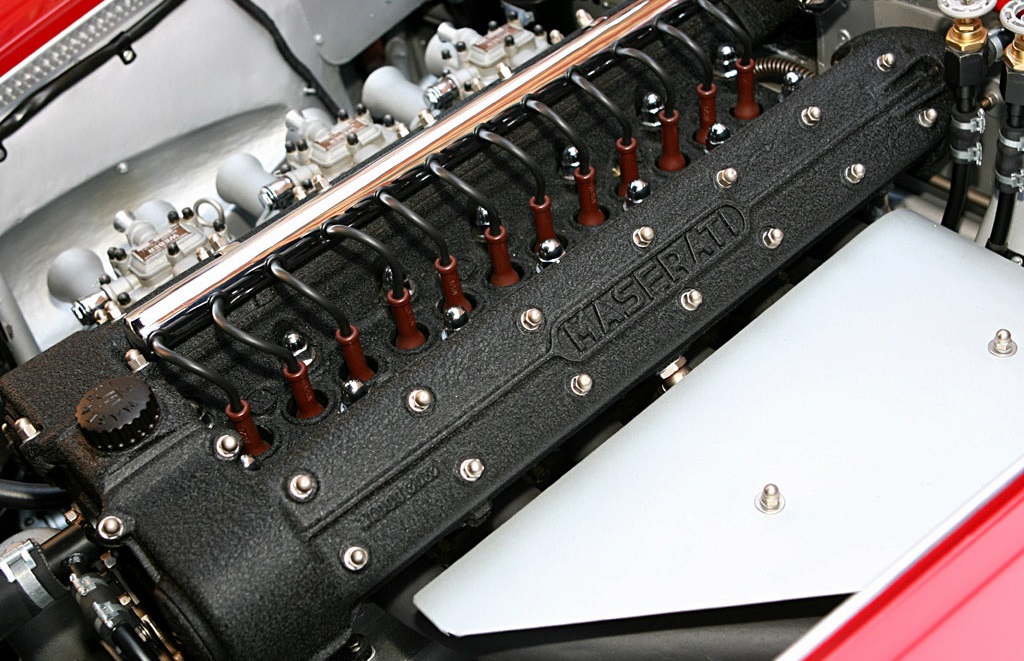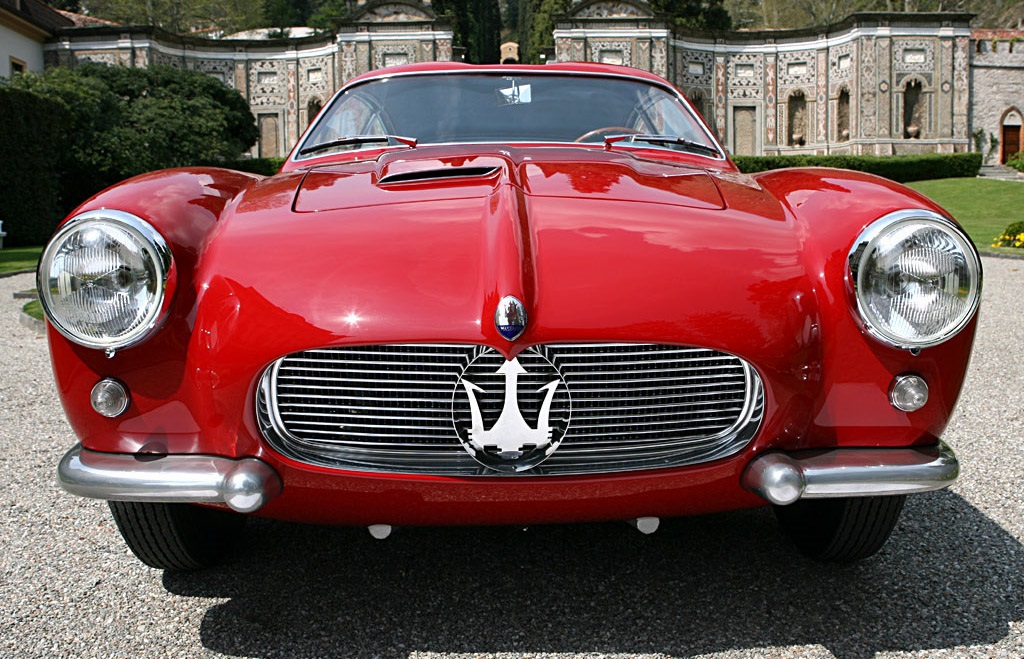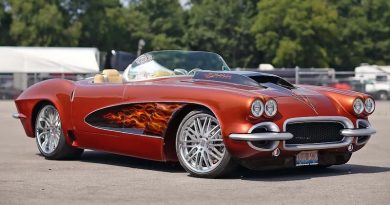1956 Maserati A6G/54 Zagato Coupe
This lovely Maserati was part of the Italian Racing Cars special exhibition, and its lightweight Zagato coachwork no doubt contributed much toward its competition mission, though it’s clear that the car was intended primarily for Sports/GT road racing given its full interior (trimmed in an unusual light blue color). The car won at Pebble Beach a few years back, but has been restored again since.

The first cars suitable for both track and public roads were the A6G with racing engines in 1949. To meet demand in the early 1950s Maserati turned to Coachbuilder Zagato to create an alloy body for a GT car weighing less than 1,800 pounds using aircraft streamlining. Only 20 Zagatos were produced and each was custom made.

1947 saw the debut of the A6, the first pure road sports car from Maserati. Before World War 2, the Italian company had only delivered a few street-legal offshoots of its racing cars to VIP customers. The abbreviation of the new model stood for Alfieri (one of the Maserati brothers) and the six-cylinder engine. The basis was the racing car A6G.CS (later written without a dot, CS for ‘Corsa Sport’), which was sent to the first sports car races at the same time and was continuously developed further in the following time. Three years and 59 copies later the further development A6G appeared with a grey cast iron engine enlarged from 1.5 to two liters capacity, for which the G in the name stood (Italian: ‘Ghisa Grigio’). Only 16 units of the A6G were produced. 1954 saw the next major model upgrade to the A6G/54, with Maserati specifically addressing weaknesses in the previous design. For example, the chassis with its front wishbones and coil springs and rear rigid axle on leaf springs was improved. In addition, the output of the six-cylinder inline engine, which still had a capacity of two liters, was increased to 150 hp. More than double that of the original A6 model. Compared with the A6GCS racing model, the A6G/54 had exactly the same displacement of 1,986 cubic centimeters, but achieved this with larger bore holes and less piston stroke, thus increasing the torque.


Inside, the car is beautifully trimmed in pale blue leather, with ribbed headlining (also in leather). Zagato is well-known for its lightweight construction, so you will see wind-up Perspex windows in fabricated, natural aluminium surrounds. Even the winders are alloy, with tiny hinged ends that fold out of harm’s way.
A large Jaeger tachometer sits behind the broad alloy and wood steering wheel. For the period, there’s a degree of play in the steering but no more and (unsurprisingly) not a lot of lock. It’s a road-going racing car, after all.

This particular Zagato originally served as a factory race car for a short time before entering a short ownership chain of European privateers and enthusiasts. More recently, it has been given a restoration to factory specifications.

There aren’t many sports cars that rival the iconic Ferrari 250 SWB, but the Maserati A6G/54 Zagato Coupe is definitely a solid choice. It has the rarity, the engineering, and the looks. And unlike other grand tourers from the era, it also has an impressive racing pedigree. The fact that the example shown here is a Concours d’elegance winner that has been restored to the last bolt makes things that much better. However, owning such a flawless car requires a fat wallet, the kind you need to purchase a vintage Ferrari.




